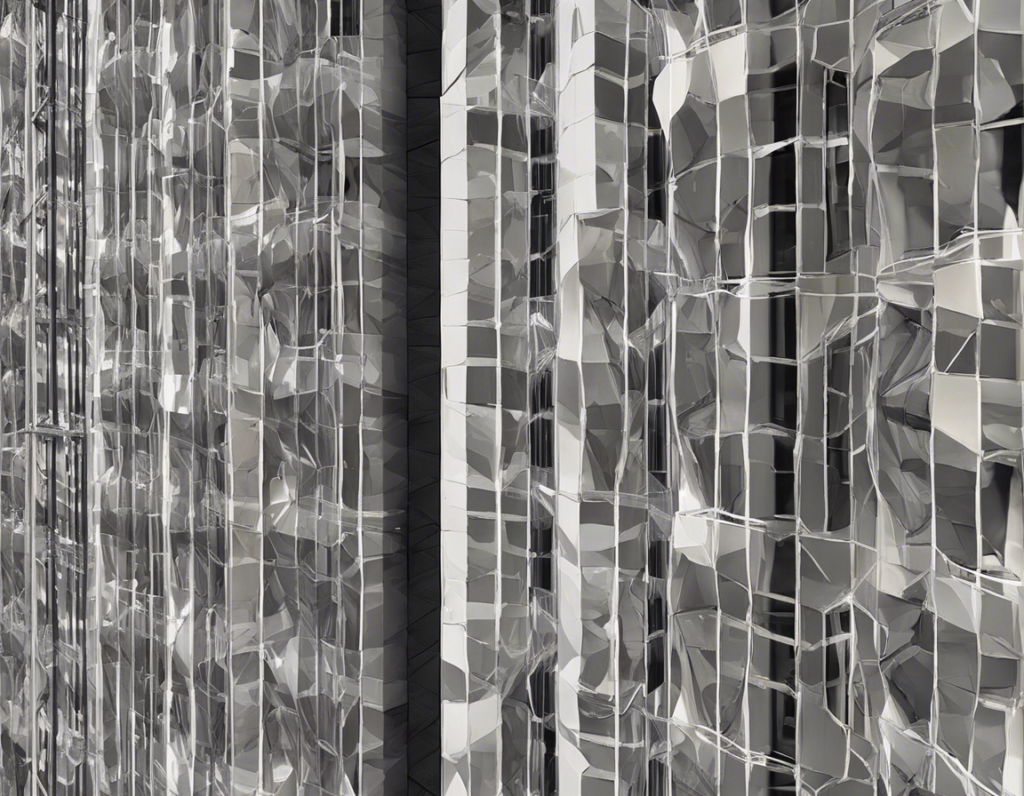Introduction
When we admire the stunning architecture of skyscrapers or the timeless beauty of historical buildings, we often focus on their aesthetic appeal, structural grandeur, and sheer magnitude. However, behind the facade lies a critical aspect that is often overlooked – facade strain. This hidden peril can pose serious risks to building structures, compromising their integrity and safety over time. In this comprehensive guide, we will delve into the world of facade strain, exploring its causes, impacts, detection methods, and mitigation strategies.
Understanding Facade Strain: Definition and Causes
Facade strain, also known as external wall loading, refers to the stresses exerted on a building’s external walls due to various internal and external factors. These forces can include wind pressure, changes in temperature, seismic activity, building settlement, nearby construction work, and inadequate structural design. As buildings age, these forces can lead to structural deformations, cracks, and, in extreme cases, failure.
Signs and Symptoms of Facade Strain
Detecting facade strain at an early stage is crucial for ensuring structural safety and preventing potential disasters. Some common signs and symptoms of facade strain include:
- Cracks: Visible cracks on the exterior walls, especially those that are diagonal or widening over time.
- Bulging or Bowing: Outward bulging or inward bowing of the facade, indicating excessive stress.
- Uneven Settlement: Variation in the levelness of floors or walls, suggesting underlying structural issues.
- Deterioration of Building Materials: Rapid deterioration of materials such as bricks, stones, or mortar.
- Water Infiltration: Seepage or water stains on walls, which can weaken the structural integrity.
Impacts of Facade Strain
Ignoring facade strain can have serious consequences, impacting both the building itself and its occupants. Some of the potential impacts include:
- Structural Failure: Facade strain can eventually lead to structural failure, risking the safety of occupants and bystanders.
- Decreased Property Value: Buildings with visible facade strain are less attractive to buyers and may face depreciation in value.
- Legal Liabilities: Owners of buildings with structural defects may face legal repercussions if accidents occur due to neglect.
- Occupant Safety: Occupants are at risk of injury or harm if facade strain results in falling debris or collapsing walls.
- Maintenance Costs: Repairing facade strain can be costly, especially if the issue has progressed to a severe stage.
Detecting Facade Strain: Inspection and Monitoring
Regular inspection and monitoring are essential for detecting facade strain early and implementing timely measures to address it. Some key methods for detecting facade strain include:
- Visual Inspection: Conducting visual inspections to identify visible signs of facade strain, such as cracks and bulges.
- Building Surveys: Utilizing laser scanning or drone technology to survey the entire building facade for abnormalities.
- Structural Monitoring: Installing sensors to monitor changes in facade movement, deformation, or stress levels.
- Thermal Imaging: Using thermal cameras to detect temperature differentials that may indicate structural issues.
- Moisture Detection: Employing moisture meters to identify water infiltration points that weaken the facade.
Mitigation Strategies for Facade Strain
Addressing facade strain requires a combination of proactive measures, structural interventions, and maintenance practices. Some effective mitigation strategies include:
- Facade Strengthening: Reinforcing the existing facade with steel bracings, carbon fiber wraps, or additional support elements.
- Crack Repair: Filling and sealing cracks with appropriate materials to prevent further propagation.
- Waterproofing: Implementing waterproofing measures to protect the facade from moisture infiltration and erosion.
- Foundation Maintenance: Ensuring proper foundation maintenance to prevent settlement issues that can strain the facade.
- Regular Maintenance: Conducting routine inspections and maintenance activities to address minor issues before they escalate.
FAQs (Frequently Asked Questions)
1. What are the common causes of facade strain in buildings?
Facade strain can result from factors such as wind pressure, temperature fluctuations, seismic activity, settlement, and inadequate structural design.
2. How can I detect facade strain in my building?
Look out for visible signs like cracks, bulging walls, uneven settlement, deterioration of materials, and water infiltration. Consider hiring a professional for a thorough inspection.
3. What are the risks of ignoring facade strain?
Ignoring facade strain can lead to structural failure, decreased property value, legal liabilities, occupant safety risks, and increased maintenance costs.
4. Is facade strain a common issue in older buildings?
Older buildings are more susceptible to facade strain due to wear and tear over time, making regular inspections and maintenance crucial for structural integrity.
5. How can facade strain be effectively mitigated?
Mitigation strategies include facade strengthening, crack repair, waterproofing, foundation maintenance, and regular maintenance to address structural issues promptly.
In conclusion, facade strain is a critical aspect of building structures that should not be underestimated or ignored. By understanding the causes, signs, impacts, detection methods, and mitigation strategies associated with facade strain, building owners and stakeholders can ensure the long-term safety and durability of their structures. Regular inspections, timely maintenance, and proactive interventions are key to preserving the integrity of building facades and safeguarding the well-being of occupants.
